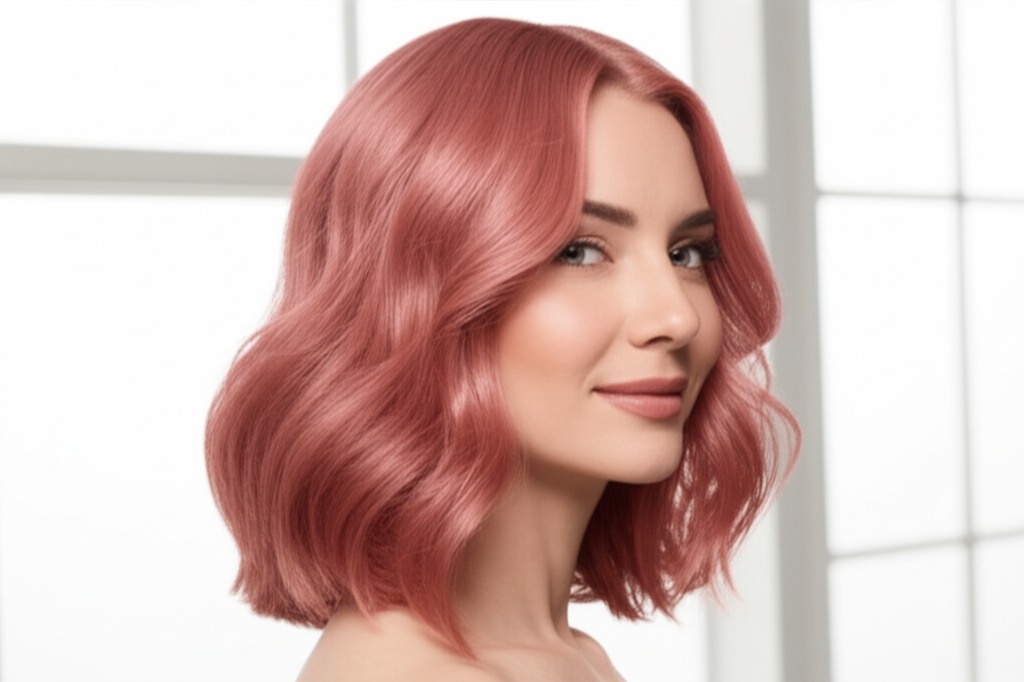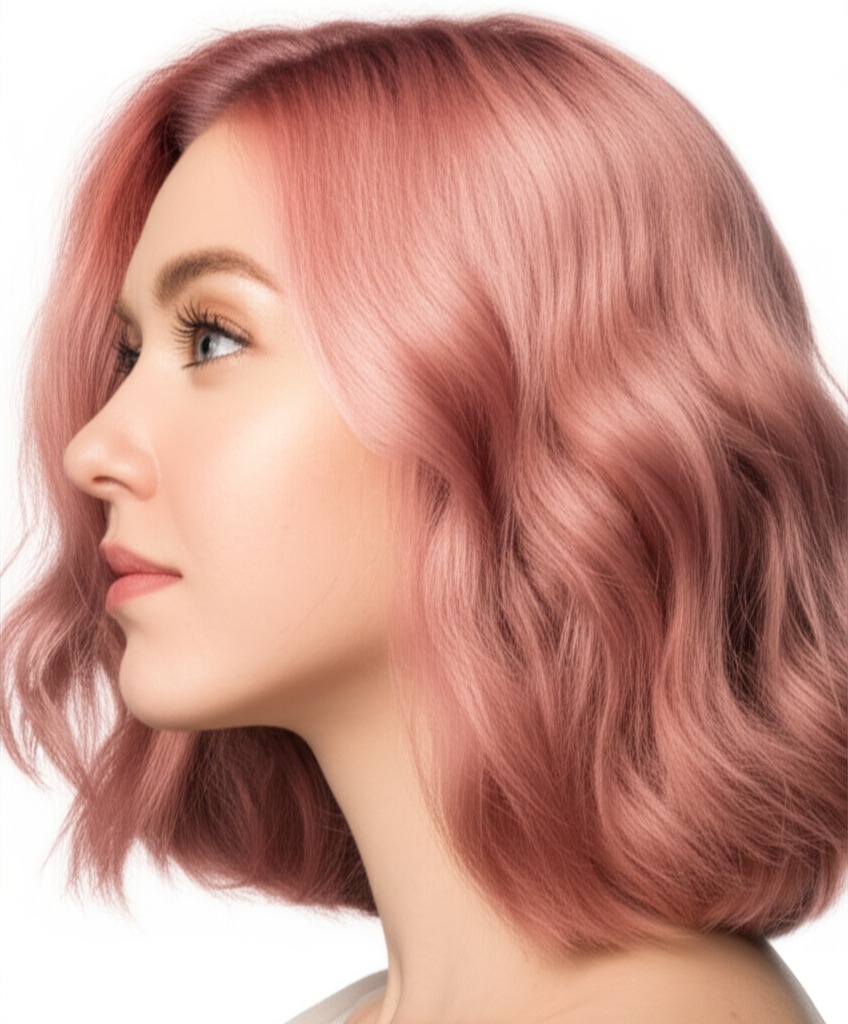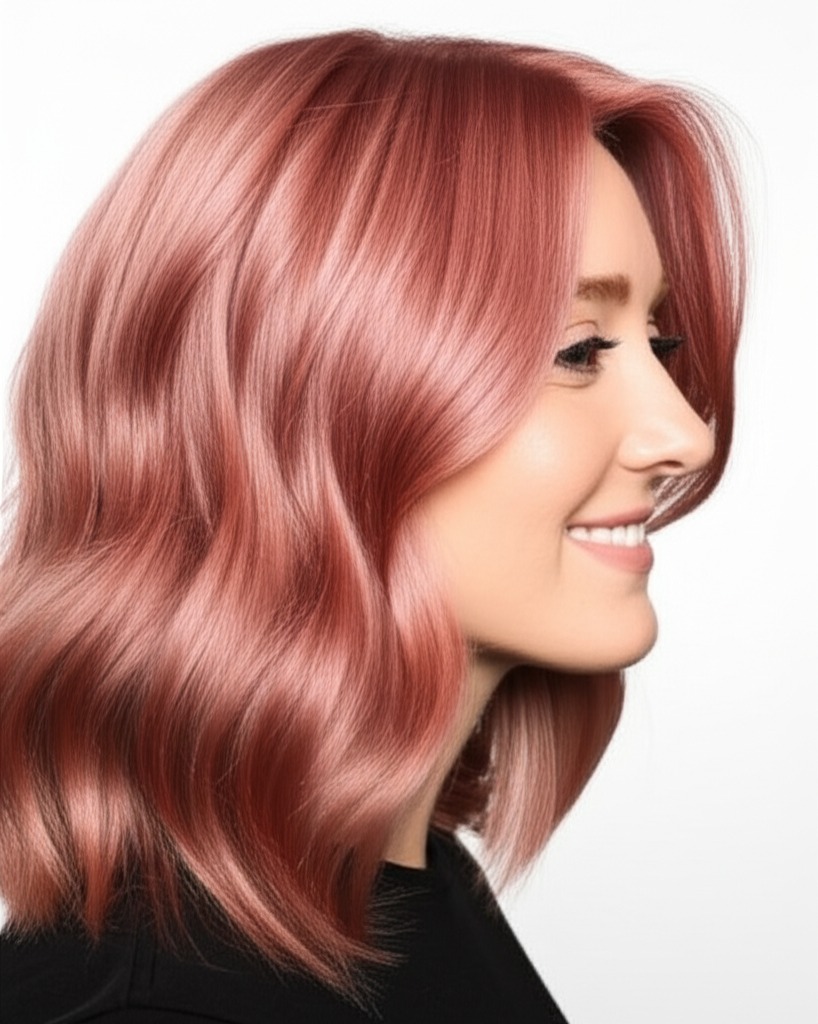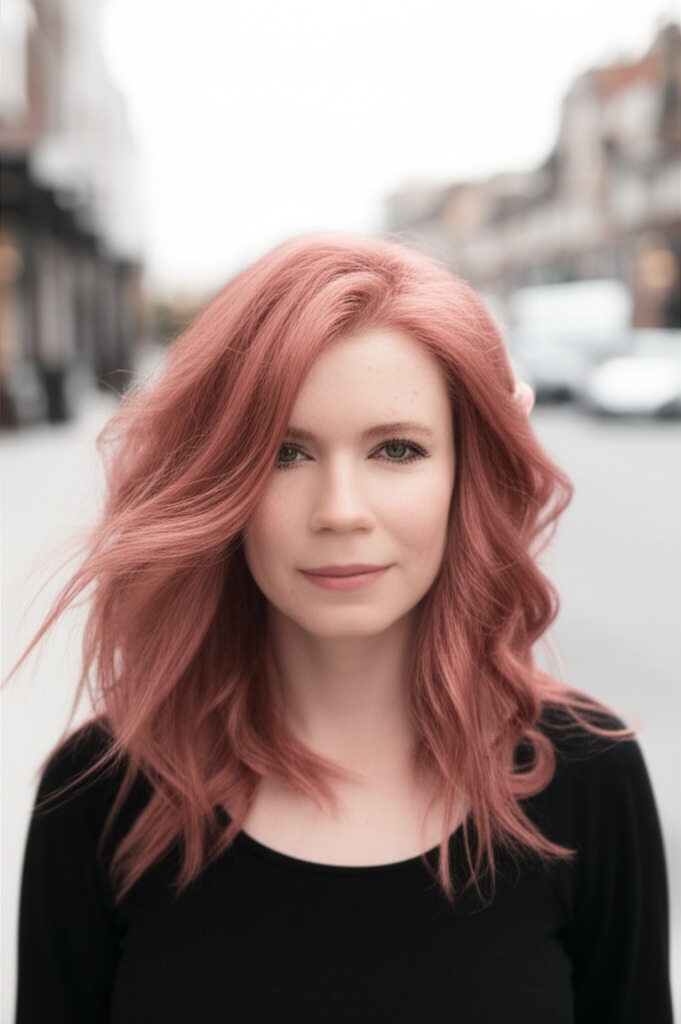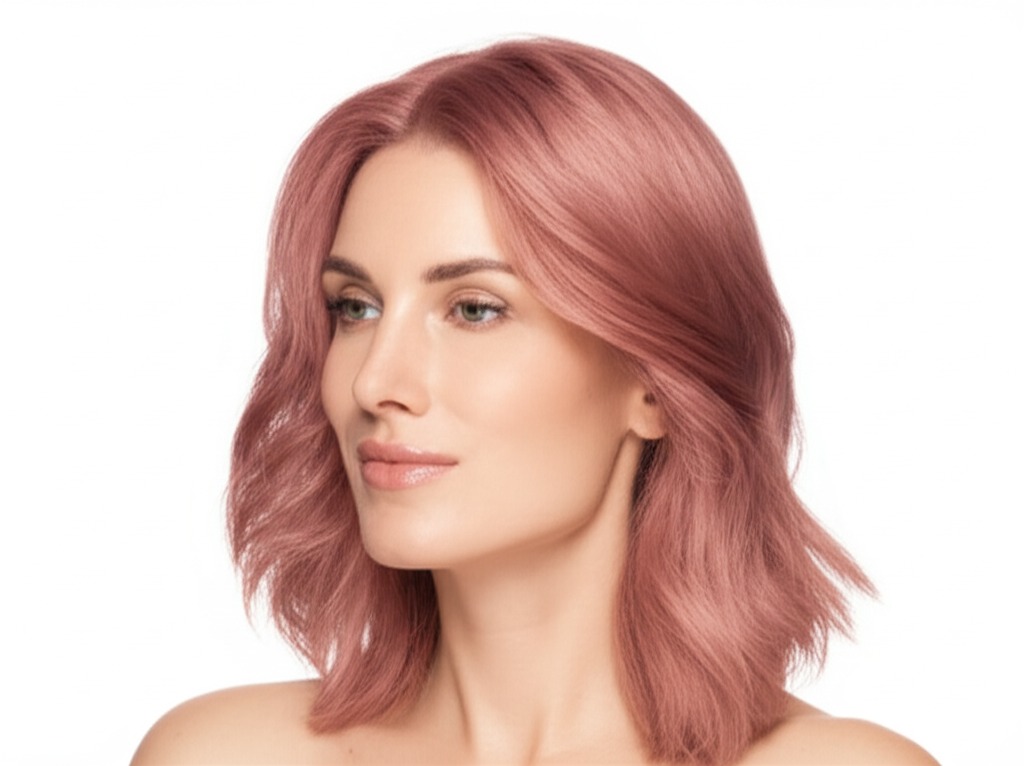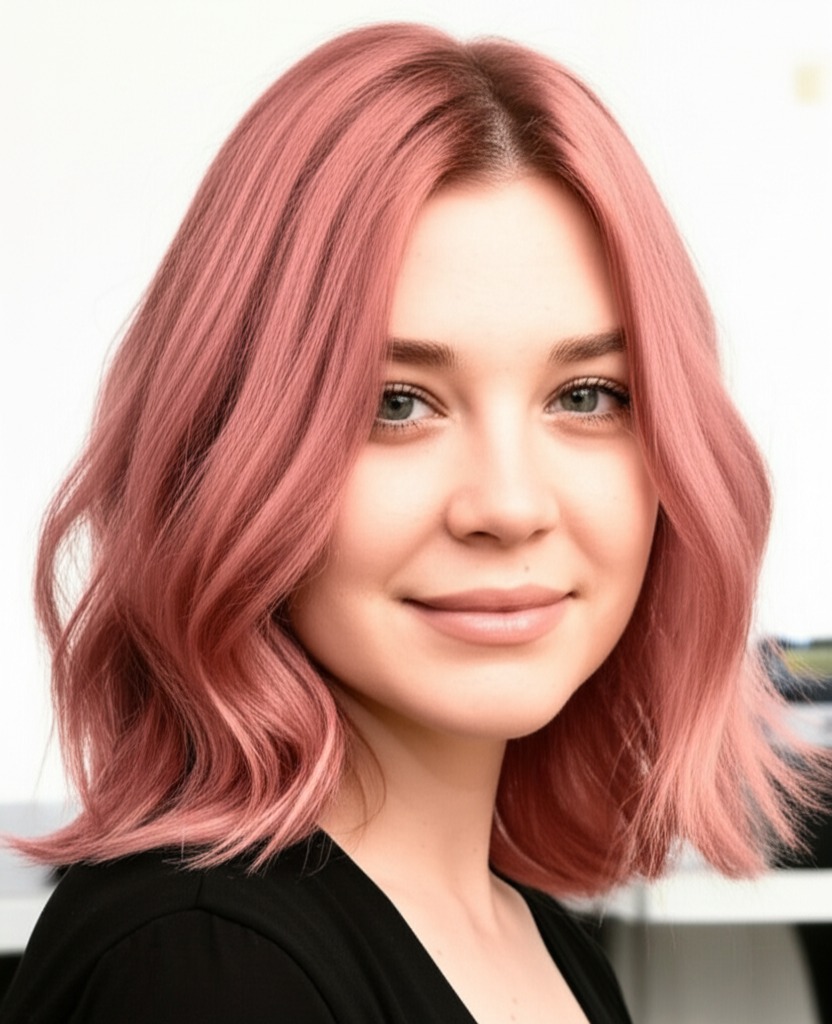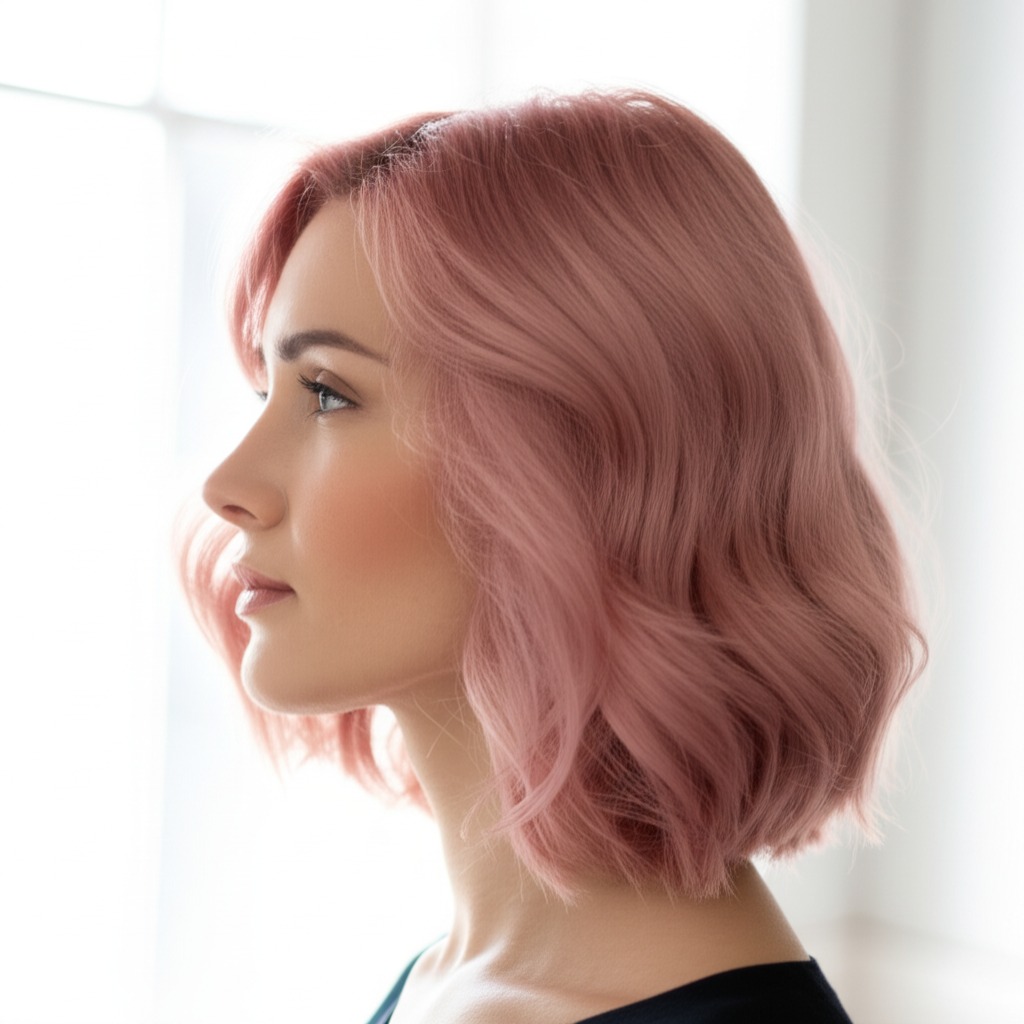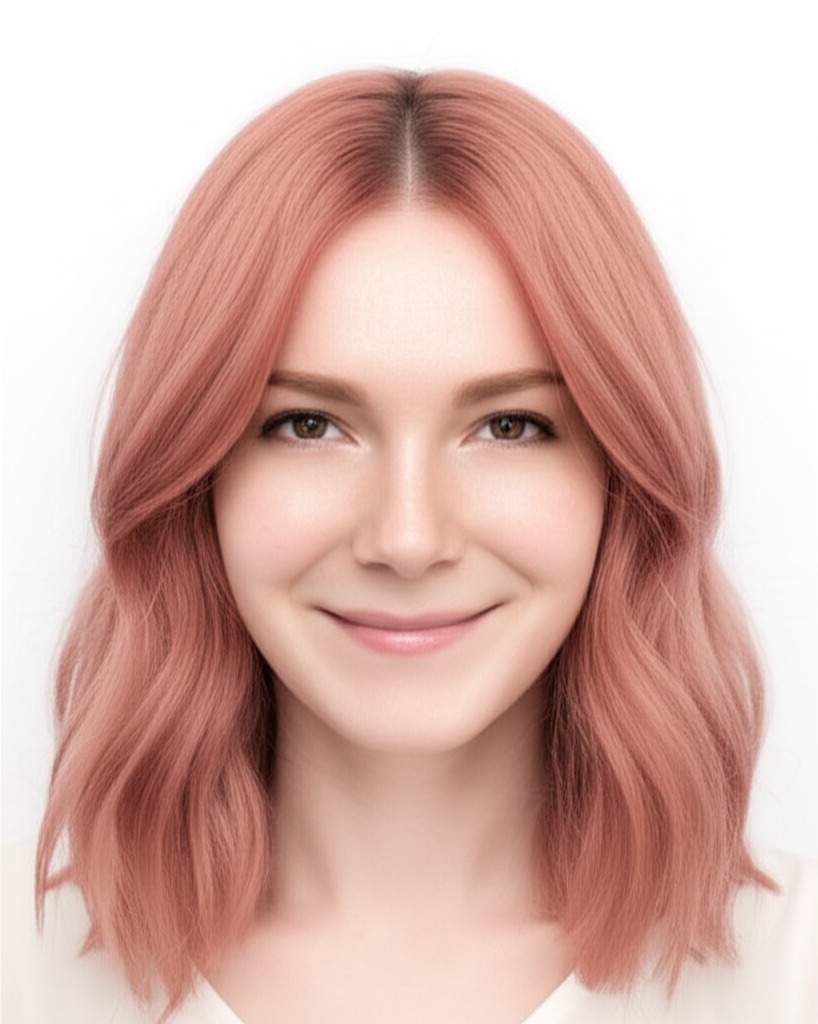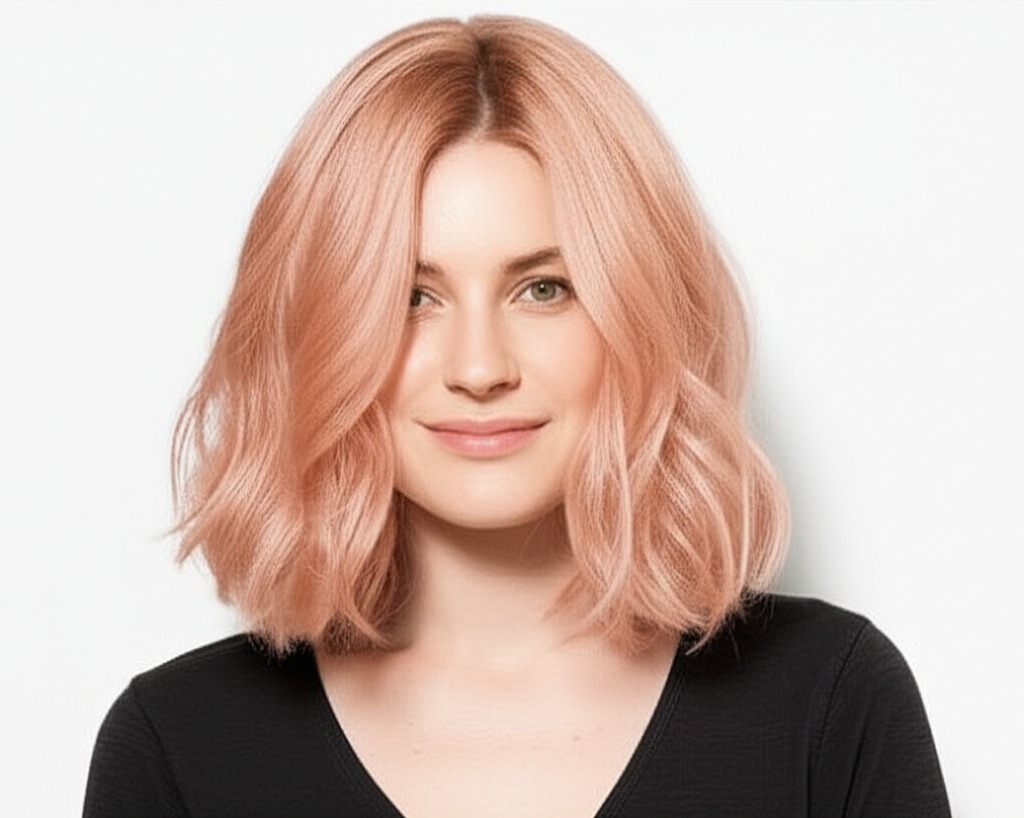#Dusty Rose Hair Color: A Guide to Romantic Hues
Dusty rose hair is having a moment! This soft, muted pink shade offers a romantic and modern twist on traditional pastel colors. But achieving the perfect dusty rose look requires more than just picking up a box of dye. Let’s break down everything you need to know – from undertones and who it suits best, to how to keep your color vibrant for longer.
#1. Understanding Dusty Rose: Shade Definition
Dusty rose isn't bright bubblegum pink. It's more sophisticated, leaning towards a muted, almost vintage feel. Here’s what makes it unique:
- Undertone: The key is cool. True dusty rose has cool undertones – think of the color of dried roses or antique blush fabrics. Warm-toned pinks (coral or salmon) won't give you that sought-after muted effect; they can look orange instead.
- Depth/Levels: Dusty rose typically sits between levels 7 and 9 on a hair level scale (1 being black, 10 being the lightest blonde). The lower the number, the more pigment already in your hair needs to be lifted. A Level 7 might require less bleaching than a Level 5. The lighter you go, the more translucent and ethereal the dusty rose will appear. Deeper tones of dusty rose (closer to level 7) are richer and have more dimension.
#2. Who Does Dusty Rose Flatter?
This color isn't universally flattering – understanding your skin tone is crucial!
- Skin Tone & Undertone:
- Best for: Fair to medium complexions with cool or neutral undertones (think pink, red, or blueish hues when you check your wrist veins). Dusty rose complements these tones beautifully, enhancing their natural coolness.
- Can Work For: Olive skin can sometimes pull off dusty rose if it's a slightly deeper shade and the application is expertly done to avoid looking muddy. This requires careful color matching by a professional.
- Less Ideal for: Very warm (golden or yellow) complexions, as the cool pink can clash and make your skin look sallow.
- Eye Color: Dusty rose looks stunning with blue, grey, green, and even brown eyes! The contrast creates a captivating effect.
- Natural Level Starting Point: Ideally, you'll want to start with hair that’s already light – level 7 or lighter is best. Darker hair will require significant lightening (bleaching), which can be damaging if not done correctly and safely by a professional stylist.
#3. Technique Options: Bringing Dusty Rose to Life
How your colorist applies the dye dramatically impacts the final result.
- Single-Process: This is the simplest method, applying one uniform shade of dusty rose all over. Best suited for those already with light hair or wanting a bold, solid look.
- Highlights/Lowlights: Adding subtle highlights (lighter pieces) can create dimension and movement within the dusty rose hue. Lowlights (darker pieces) are less common but can add depth to darker bases.
- Babylights: These incredibly fine highlights mimic natural sun-kissed streaks, creating a soft, blended effect. A great option for adding subtle pops of pink without a drastic change.
- Gloss/Toner: Toners are essential for achieving the right dusty rose shade! They adjust the tone of pre-lightened hair to reach that perfect muted pink. A gloss adds shine and seals in color.
- Balayage-Effect vs Solid: Balayage (hand-painted highlights) creates a softer, more natural look with less harsh lines than traditional highlighting. A solid application offers even coverage for a bolder statement.
#4. Maintenance & Longevity: Keeping Your Rose Blooming
Dusty rose is a commitment! Here's what to expect:
- Wash Frequency: Limit washing to 2-3 times per week, or less if possible. Every wash fades the color.
- Toner Refresh: Toners are your best friend! Expect to reapply toner every 4-8 weeks, depending on how quickly your hair fades and grows out.
- Root Growth Pacing: As your roots grow in, consider blending them with balayage or subtle highlights rather than a full color correction – this extends the time between major salon visits.
- Budget/Time Planning: This is not a low-maintenance color. Budget for regular salon appointments (every 6-12 weeks) and factor in the cost of specialized at-home products. Time commitment: expect several hours at the salon initially, with shorter touch-up appointments later.
#5. Seasonality & Pairing With Cuts: A Rose For Every Style
Dusty rose adapts beautifully to different seasons and hairstyles!
- Pairing with Cuts:
- Bob/Lob: The blunt lines of a bob or lob provide a sharp contrast to the softness of dusty rose, creating a modern edge.
- Long Layers: Long layers allow for movement and dimension, showcasing the color's subtle variations.
- Pixie Cut: A pixie cut can be incredibly playful with short bursts of dusty pink – perfect for those wanting a bold statement.
- Seasonal Tweaks: In summer, consider adding more golden highlights to your balayage for a sun-kissed effect. In winter, deepen the rose tone slightly for a richer, cozier feel.
- Event/Occasion Picks: Dusty rose is perfect for daytime events (brunches, casual gatherings), evening occasions (parties, dinners), and even weddings – especially if you're aiming for a romantic or whimsical vibe.
#6. At-Home Care: Protecting Your Investment
Proper at-home care is vital to prolonging your dusty rose color.
- Sulfate-Free vs Clarifying Cadence: Use sulfate-free shampoos and conditioners always. Sulfates strip away color quickly. Occasional clarifying treatments (every 4-6 weeks) can remove buildup, but use them sparingly as they also fade the color.
- Heat Protection: Heat styling is a major culprit in color fading. Always apply heat protectant before using any hot tools.
- Color-Safe Styling Tips: Opt for cool-toned hair products to prevent brassiness. Avoid purple shampoos unless specifically recommended by your stylist (they can sometimes make the pink too violet).
- Product Checklist: Sulfate-free shampoo & conditioner, color-safe heat protectant, leave-in conditioner, hair mask (for hydration), and a good quality dry shampoo.
#7. Common Pitfalls: Avoiding Color Mishaps
Let's address potential problems before they happen!
- Brassiness: The cool undertones of dusty rose are susceptible to brassiness (orange/yellow tones). This is especially common if your hair wasn’t light enough initially or you aren’t using color-safe products. Purple shampoo can help slightly, but toner is the real solution.
- Banding: Uneven lightening during the bleaching process can result in banding – noticeable lines of demarcation between different levels of lightness. This requires a skilled stylist who understands proper foil placement and processing times.
- Patchiness: Uneven application or inconsistent lifting can lead to patchy color. A thorough consultation with your stylist is key to ensure even saturation.
#8. Pros & Cons: Weighing the Options
Pros:
- Unique & Stylish: Dusty rose stands out from traditional hair colors.
- Romantic & Feminine: It evokes a soft, dreamy aesthetic.
- Versatile (with proper styling): Can be adapted to suit various cuts and occasions.
Cons:
- High Maintenance: Requires frequent salon visits and specialized at-home care.
- Fade Risk: Pink pigments fade quickly without diligent upkeep.
- Significant Lightening Required: Darker hair needs substantial bleaching, which can damage the hair if not done properly.
#9. Salon Consultation Script: Setting Expectations
Before committing to dusty rose, have an open and honest conversation with your stylist. Here are some prompts to guide the discussion:
- “I’m interested in dusty rose hair color. Can you assess my current hair level and determine if it's suitable?”
- "What lightening process will be required? How long will that take?"
- "Can we discuss potential damage risks associated with bleaching, and how to minimize them?"
- "How often do you recommend toner touch-ups for this color?"
- “Could you show me examples of dusty rose on different skin tones?”
- "What at-home products would you suggest to maintain the color's vibrancy?"
- “Can we discuss a plan for root growth and how to blend it seamlessly?”
#10. FAQs: Your Burning Questions Answered
- Is dusty rose suitable for all hair types? While possible, coily or very dense hair will require more bleaching and can be prone to dryness – extra care is needed.
- Can I achieve this color at home without damaging my hair? It's risky! Professional lightening is almost always necessary to reach the right level of lightness safely.
- How long does dusty rose last? Without regular toner touch-ups, it will fade significantly within 4-6 weeks.
- Will this color make my hair feel dry? Lightening processes can be drying – proper hydration and conditioning are crucial.
- Can I go darker after having dusty rose? Yes, but the underlying pink tones may peek through, requiring a base color to neutralize them.
- What if I don’t want a super-bright pink? A deeper, more muted shade of dusty rose will be less intense and easier to maintain.
Dusty rose hair is a beautiful statement – embrace its romantic charm with careful planning and expert execution!
